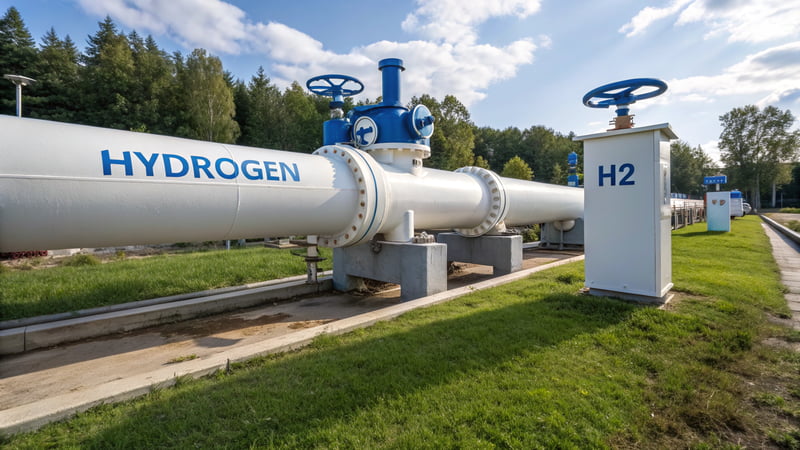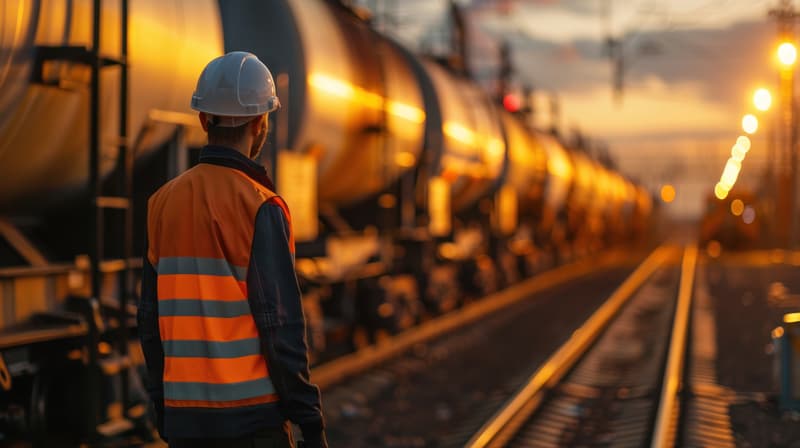Just a decade ago, Poland was mainly associated with refurbishing ageing diesel locomotives; today it is emerging as Europe’s centre of competence for hydrogen rail transport.
The world’s first hydrogen-powered shunting locomotive is already at work on Polish tracks, and mature prototypes are waiting in the labs for main-line trials.
From prototype to commercial service
The country’s first hydrogen locomotive, built by PESA of Bydgoszcz, was unveiled at the Gdańsk trade fair in 2021. Two years later, the Office of Rail Transport authorised the modernised SM42-6Dn-Hydrogen for operation. The unit has four traction motors powered by two Ballard fuel-cell stacks delivering a combined 170 kW, while tanks holding 175 kg of hydrogen provide a full 24 hours of continuous work, without emitting harmful exhaust. Compared with the diesel version, noise has been cut by 6 dB. PESA’s locomotive is the world’s first hydrogen vehicle with full type approval.
In autumn 2023, the first unit went to the PKN ORLEN group. Trials on the sidings in Płock confirmed the promised performance, and the company announced plans to build fixed and mobile hydrogen refuelling stations at its largest refineries and chemical plants. By 2030, ORLEN intends to invest PLN 7.4 billion in hydrogen technologies, a substantial share of which will support rail transport.
 Scandinavian expansion and further innovations
Scandinavian expansion and further innovations
In May 2025, during the Sweden H₂ Roadshow, the Polish hydrogen locomotive demonstrated its capabilities in the ports of Oxelösund, Göteborg and Malmö, handling 1,500-ton trains on gradients of 15 ‰. The good results led to a letter of intent among PESA, the operator Väte Rail and the logistics group Hankavik: the first series-built locomotives are to enter service in Sweden in 2027–28, with the contract package also covering construction of green-hydrogen refuelling facilities.
Experience with the shunter has laid the groundwork for the next projects. In Bydgoszcz, the 2H locomotive is taking shape, designed to run both on hydrogen fuel cells and from the overhead supply. The prototype may roll out around the turn of 2026/27, aimed at partly electrified lines where locomotive changes are now required. In parallel, PESA is developing a hydrogen-electric version of its Regio 160 multiple-unit platform, intended for regional services on non-electrified routes. The premiere is expected after 2026, and the train is already attracting interest from regional operators in Italy and Croatia.
The Polish Hydrogen Strategy and EU support
Industry decisions and successful deployments align with the state’s Polish Hydrogen Strategy 2030, which calls for at least 32 H₂ stations by 2025 and commercial hydrogen trains before the end of the decade.
Poland already hosts eleven Hydrogen Valley projects—from Lower Silesia through Mazovia to Pomerania (as of June 2025). Two of them, the Mazovian and Amber Hydrogen Valleys, have earned Mission Innovation flagship certificates.
Polish initiatives fit EU priorities. In May 2025, the Clean Hydrogen Partnership—a joint undertaking of the European Commission, Hydrogen Europe and Hydrogen Europe Research—allocated €154.6 million to 26 projects advancing hydrogen technology. Among them are Polish hydrogen valleys and rail applications. The HySPARK consortium with PKN ORLEN received €9 million for a network of hydrogen airport vehicles in Warsaw, an important step toward creating demand for clean fuel.
 Zero-emission prospects
Zero-emission prospects
Replacing a single conventional SM42 with the hydrogen version reduces CO₂ emissions by approximately 530 tons per year and eliminates nitrogen oxides and particulates. Although hydrogen currently costs two to three times more than diesel fuel, falling prices for renewable energy and electrolysers suggest total life-cycle costs could match those of traditional diesels in the second half of the decade. The hydrogen’s origin is crucial, too—the real carbon footprint of a vehicle fuelled with green hydrogen is far lower than one using blue or grey hydrogen.
By securing type approval for the SM42-6Dn and winning export contracts in Scandinavia, Poland has taken a leading position in hydrogen rail innovation. If the refuelling-station rollout stays on schedule and the 2H and Regio 160 Hydrogen projects enter series production, domestic firms could set Europe’s standards for zero-emission rail transport-making “Made in Poland” a by-word for green progress on the tracks.
Who Supports Poland’s Rail Vehicle Makers abroad?
International promotion is coordinated by the Polish Investment and Trade Agency (PAIH) under the banner “Poland. Business Forward”. Activities form part of the Industry Programme within the “SME Internationalisation – Brand HUB” project, carried out with the Ministry of Economic Development and Technology under the “European Funds for a Modern Economy 2021–2027” framework. For details, contact: brandhub@paih.gov.pl.






 Scandinavian expansion and further innovations
Scandinavian expansion and further innovations Zero-emission prospects
Zero-emission prospects